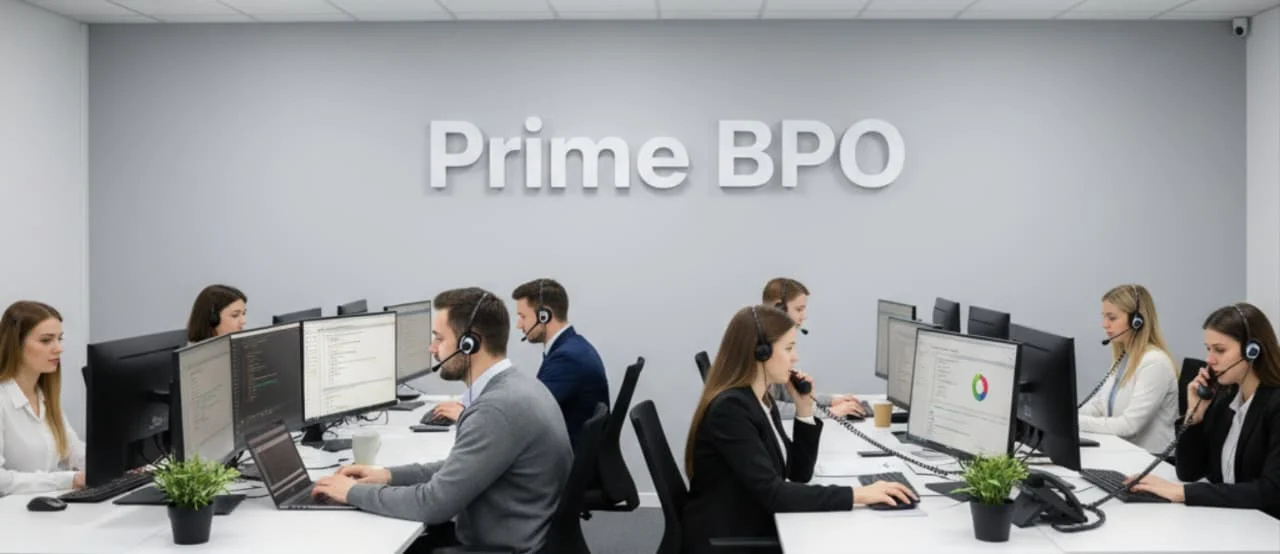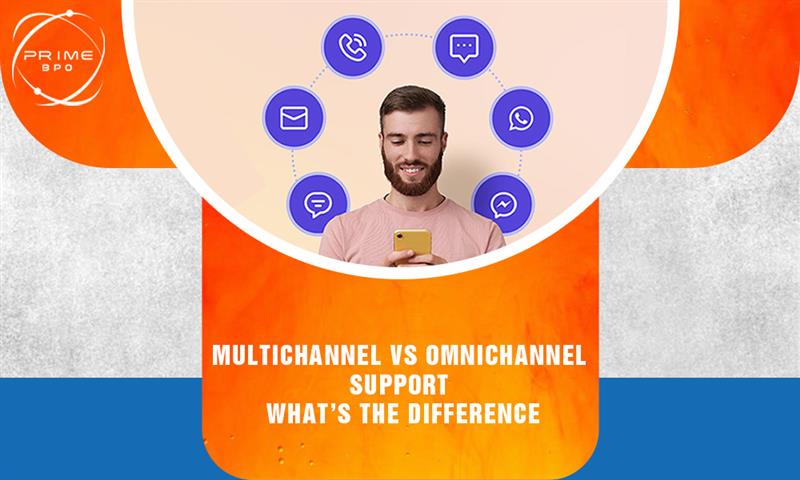Customers always want quick and easy support when they reach out to a company for a problem or a question. No matter if they reach you on social media, email, phone, or chat. The debate is all about how you will help your customers and give them a solution to their problem. Here, the multichannel and omnichannel support comes in. Let's make a difference in these two, how they work, and when you choose each. We will explore both in this article.
What is Multi-Channel Customer Support?
In multichannel customer support, customers reach the company by different platforms in different ways. These platforms include email, phone, social media, live chats, and text messages. These means of reaching the company are working on their own, and they are not connected. Let's suppose that a customer sends an email one day and then contacts support on social media another day, the support team might not see the earlier message or know what was already talked about.
What is Omnichannel Support?
On the other hand, the omnichannel support means that the company is making the customer experience smooth and connecting them across all the channels. They are not keeping each channel separate. Instead, they are linked together in one system. So if the customer is talking on social media and wants to continue the chat on the website or call support, the team can see the full conversation history. This will be so helpful for the customer not to give the details again and again about the problem
What’s Best for Your Business - Multichannel or Omnichannel
Picking between multichannel and omnichannel support depends on what you want to achieve in your business, customer needs, and available resources. Here’s a simple understanding helping you decide:
When to Choose Multichannel Support
Multichannel is very easy to set up and lets you be available where your customers are, without needing complex tools or a heavy investment. Multichannel support is the best choice for you if:
- Your customers like to contact you through different platforms like phone, email, or social media, and don’t expect everything to be connected.
- Your business is just starting out and needs a basic way to offer customer support.
- You have a small team or limited budget and can’t invest in advanced systems.
- You prefer to manage each channel separately with its own process.
When to Choose Omnichannel Support
If you want to grow your business, Omnichannel support is the best option. This will help you to give customers high-quality, personalized support. You can go with omnichannel support.
- If you want to give your customers a smooth and connected experience across all channels.
- If your customers often switch between channels, and expect your team to keep track.
- If you want to save time by avoiding repeated questions or tasks across different channels.
- If you’re focused on keeping customers happy and loyal by offering consistent service.
- If you deal with ongoing or complex customer issues that need full context, no matter how the customer contacts you.
How Does Omnichannel Support Improve Customer Satisfaction?
Omnichannel support enhances customer satisfaction by:
- Providing Consistency: Customers receive the same level of service regardless of the channel they use. This avoids confusion and frustration.
- Personalizing Experiences: Access to unified data lets agents tailor interactions based on the customer's history and preferences.
- Reducing Repetition: Customers don’t need to repeat information when switching channels, since agents can see past conversations.
- Increasing Responsiveness: Omnichannel platforms streamline workflows, allowing quicker resolutions.
- Building Trust: A seamless experience boosts customer confidence and loyalty.
Studies show that customers engaging with brands through omnichannel support report higher satisfaction levels compared to those interacting through siloed channels.
How to Implement an Omnichannel Support Strategy
Implementing an omnichannel strategy requires a strategic and phased approach:
1. Assess Your Current Channels and Customer Needs
Evaluate all existing customer support channels and identify where your customers engage most. Understand pain points caused by channel silos.
2. Choose the Right Technology
Adopt omnichannel support software that unifies communications, such as CRM systems integrated with chat, email, social media, and call center platforms.
3. Centralize Customer Data
Ensure all customer interactions and data points feed into a single system to provide agents with comprehensive customer insights.
4. Train Your Support Team
Educate agents on using omnichannel platforms and emphasize the importance of consistent, personalized communication.
5. Optimize Workflows
Create processes that allow seamless handoffs between channels and prioritize faster, more efficient responses.
6. Measure and Iterate
Track KPIs like response time, resolution rates, and customer satisfaction scores to continuously refine your omnichannel support.
Key Benefits of Multichannel and Omnichannel Support
|
Feature |
Multichannel Support |
Omnichannel Support |
|
Channel Integration |
Channels operate independently |
Channels fully integrated |
|
Customer Experience |
Separate, fragmented |
Seamless, unified |
|
Data Sharing |
Limited or none |
Complete, shared customer data |
|
Personalization |
Basic or none |
High, based on comprehensive data |
|
Implementation Complexity |
Simple, quicker to deploy |
More complex, requires technology investment |
|
Customer Satisfaction |
Moderate |
Higher, due to consistency and personalization |
Conclusion
You should think about how you want your business to grow when you choose between multichannel and omnichannel. Multichannel marketing is perfect for startups and small businesses because it's an easy approach to reach clients across multiple platforms. However, omnichannel support becomes important to delivering a smooth, connected experience as customer expectations go up. Knowing both methods enables you to create a support plan that enhances client relationships and fosters sustained company expansion.
FAQs
1. What is the main difference between multichannel and omnichannel support?
Multichannel support offers help through different channels like email, phone, and social media, but each one works separately. Omnichannel support connects all channels so customers have a smooth, joined-up experience no matter how they contact the company.
2. Which type of support is easier to set up, multichannel or omnichannel?
Multichannel is easier and quicker to set up. It’s a good choice for small businesses or those just starting out because it doesn’t need advanced technology or a big budget.
3. Why should growing businesses choose omnichannel support?
Omnichannel support helps to grow businesses to offer better, more personalized customer service. It keeps all customer info in one place and allows support teams to respond faster and more effectively.
4. How does omnichannel support improve customer satisfaction?
It gives customers a consistent experience, reduces the need to repeat information, and helps support agents give quicker, more helpful answers, making customers feel understood and valued.
5. Can I start with multichannel and switch to omnichannel later?
Yes! Many businesses begin with multichannel support and move to omnichannel as they grow and need a more connected, customer-focused system.
Choose the right support for your business.
Start with multichannel or upgrade to omnichannel for a better customer experience






